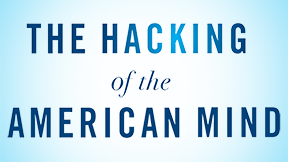 The Hacking of the American Mind—Report Number 3
The Hacking of the American Mind—Report Number 3
by Robert H Lustig, MD, MSL
Synopsis of Report #2
Two quotes from Lustig well sums up his account so far.
No pleasure means no happiness. Pleasure is the straw that stirs the drink. Happiness is the drink. Anxiety melts the ice cubes. We all need reward, because reward keep anxiety at bay . . . for a short time.
When taken to the extreme, these two pathways can take you to the highest mountain or the lowest valley—addiction, depression, and just plain misery. The science in Part 2 and 3 says so.
Pleasure and happiness are interrelated, and there has to be a proper balance. If all pleasure is removed from a person’s living, his/her zest for life is gone.
Chapter 3: Desire and Dopamine, Pleasure and Opioids
Lustig is a university trained medical doctor. He’s also an endocrinologist, and his writing is on a university level with almost the expectation that his reader can grasp the technical terminology that he uses. As I mentioned before, understanding some of his technical stuff is stretching my brain. I will do my best to interpret it for you.
Lustig starts out by reminding us that reward is a strong driver of human emotion. He uses several paragraphs to explain this in greater detail. His summation is as follows:
Reward is first and foremost. Reward is the end. And sometimes reward literally becomes your end. Because one reward is never enough. When one reward becomes the primary goal, overwhelming all else, the end consequence is addiction—perhaps the nadir (the lowest point) of unhappiness. Therefore, understanding the inner working of reward is paramount to any discussion of personal or societal benefit or detriment.
My Comments: Lustig is spot on when he says, “becomes your end.” I have two cousins that predeceased their parents due to booze and drugs. Their reward was their end.
I have witnessed several people so addicted to their refined carbohydrates that they are dying a slow death of degenerative diseases, meaning obesity, diabetes, heart attacks and strokes. They’re still consuming their sweets, and gradually losing the battle with ever increasing doses of insulin. It’s akin to the person with emphysema that continues to smoke.
Continuing: Lustig says that the reward pathway is basic to survival. If our parents hadn’t enjoyed sex, we might not have been reading this text. He says that scientists have now learned how the reward pathways work and how they can be manipulated for both good and bad.
From hereon out, the chapter gets very technical. Please feel free to read it in its entirety if you care to delve into the intricate details.
Lustig says that we can distill the discussion down to the trigger of the pathway: dopamine:
…Virtually all pleasurable activities (sex, drugs, alcohol, food, gambling, shopping, the internet) employ the dopamine pathway in the brain to generate the motivation. But too much dopamine starts the downward spiral toward misery (my emphasis). If you can put “-aholic” on the end of the word (alcoholic, shopaholic, chocaholic, sexaholic) then the dopamine pathway is in play.
My Comments: I emphasized “misery” in that Lustig is so right with his analysis of too much dopamine. When he mentioned food, he didn’t elaborate, but you can bet your last dollar that he is referring to refined carbohydrates, meaning white flour and rice, sugars, and high fructose corn syrup, etc. I have a relative that is miserable because her choices of consuming alcohol and junk food have led her to type 2 diabetes, obesity, amputated toes, having a stroke, and now being confined to a wheelchair. All of this is for a person in her fifties!
Continuing: Lusting explains that our dopamine levels can be graded on a bell-shaped curve. If a person doesn’t have enough dopamine, she will be lethargic and have little motivation for reward.
But if you’re already at the top of your bell-shaped curve, and you get that same dopamine boast, it can result in a transitional state that can quite unpleasant. Moreover, your current position on that bell-shaped curve can be changed by your experience with many forces, including stress and medicines.
Lustig cites two examples of being moved the wrong way on this bell curve. Number one is obesity. In a nutshell, obesity plays havoc with your dopamine system in very consistent ways. The obese person is already skewed to the right on the bell-shaped curve. An advertisement for Oreos, for example, can trigger a dopamine release, and now the person is overloaded with dopamine and has nowhere to go but down.
Worse, leptin is the hormone that tells our brains that we have had enough. It can get totally fouled up in the obese person’s brain* resulting in eating the second, third, and fourth pint of ice cream. The dopamine satisfaction continues to dwindle so he gets less and less reward from eating the ice cream. *Rather than referring the anatomical terminology for various parts of our brains, I’ll keep it simple and only use the word “brain.”
For a deeper understanding of how leptin works, Lustig references his book Fat Chance: Beating the odds against Sugar, Processed Food, and Disease. He also explains that some people have a genetic disposition for their obesity. Part of their brain can light up faster and quicker when they see a food commercial compared to people with normal weight.
My Comment: Lustig brings up the subject of food commercials. Where do you see most of these commercials? Of course, it’s on television. Please permit me to explain the power of advertising and how it plays around with our minds.
Let’s say Wilma Nesmeyer is 30 years old and has never touched alcohol in her life. She has her first taste of wine, only a few ounces, and she is already in a swooning state from the effects of what little alcohol was in that wine. It had an extraordinarily powerful effect on her. Just a small dose sent her reeling.
I don’t watch television, and I don’t have a TV in my home as my time is too valuable to passively sit and watch the screen. I’d rather be doing something more productive.
However, when I visit my sister-in-law who lives out-of-state, I’m exposed to the TV and its advertising. She’s a widow and has it on all the time. I ask her to turn it down or even off when I’m interacting with her. However, sometimes I’m forced to watch some of it.
I’m like Wilma. I literally feel the effects of how the advertising is working on my mind. One or two doses of it sends me reeling. It’s like, “Wow, what hit me; what’s pulling at my brain?” It like an assault on my mind. I certainly don’t like allowing someone to subliminally screw around with my emotions. I used to love eating Oreos, and seeing an Oreos commercial wants to trigger my dopamine response. In another era, it could have been the motivation to buy some. It’s incredibly powerful!
If you are trying to overcome your addiction to sugary, refined and processed foods, exposing yourself to advertising is like trying to put out the fire while at the same time fueling the flames. If you know you have a weakness here (most of us do), it’s best to minimize our exposure to advertising as much as possible.
Continuing: The second example that Lustig cites is estrogen. Simply put, rising estrogen means rising dopamine. He gives examples of how this can affect a woman’s moods. She can be either focused and motivated, checking things off her to-do-lists, or on the verge of maiming her family member for forgetting to pick up the ice cream. For complete details, please refer to pages 50-51.
Get a Hit, Get a Rush
Lustig explains that there are three separate modes for the regulations of our dopamine levels.
(1) Synthesis: Dopamine is made in neurons of the ventral tegmental area (VTA) from the amino acid tyrosine, found in many foods. Ed: Examples are high-protein foods such as chicken, turkey, fish, milk, yogurt, cottage cheese, cheese, peanuts, almonds, pumpkin seeds, sesame seeds, lima beans, and avocados.
Lustig continues with a brief discussion of drugs that have been used to either decrease or increase dopamine levels.
(2) Action: This gets very technical. There are receptors for the dopamine that is produced our brains. If a person has fewer receptors, in part due to genetic reasons, it takes more dopamine to arrive at one’s optimal level. If a person has fewer receptors, then it takes more food intake to generate the reward, and that, of course, leads to weight gain. Put another way, this person needs more of a fix to generate the same level of reward as people without this particular genetic variation.
Lustig describes some of the uses for pharmaceutical drugs such as Risperdal, Zyprexa, and Abilify. They are used to enhance the effects of a person’s anti-depressant prescription. These drugs may be also used to treat ADHD, but they have their own side effects. These can be lack of motivation, walking around in a personality daze, and induce insulin resistance in the liver which leads to weight gain.
(3) Clearance: Remember, the synapses are the connecters between our nerves. The dopamine is like the electricity (electrons) flowing through the wires. The dopamine needs to be cleared out of the synapse, which occurs from one of two mechanisms.
The dopamine molecules can be recycled and used again. The dopamine transporter (DAT) transports and sucks dopamine back into the nerve terminal, removing it from the synapse and readying it for the next stimulus.
Lustig points out that cocaine and methamphetamine, in essence, fool the DATs into keeping more dopamine in the system. Now you know why they’re called uppers.
Dopamine molecules can be deactivated. The very technical explanation is on page 55.
Too Much of a Good Thing
Lustig cuts to the chase:
Recreational drugs such as cocaine are the quickest way to boost your dopamine. But drugs aren’t the only way to access reward, and drug use isn’t the only manifestation of a disordered reward pathway.
He explains that other behaviors can quickly can become addictive and specifically cites gambling. He mentions the excitement of the Kentucky Derby.
It generates the same dopamine rush, to different extents, as a ski run down a steep slope, a shopping spree . . . or a line of cocaine.
Lustig explains that dopamine is the just the gateway neurotransmitter or the trigger. He likens dopamine to sexual foreplay.
. . . the euphoria, the pleasure is mediated through another set of chemicals, the endogenous opioid peptides (EOPs) whose cell bodies are in the hypothalamus, the brain area that controls emotions. The most famous of these is beta-endorphin, the brain peptide with properties similar to morphine. It binds to the same opioid receptor as does morphine or heroin, generating the pleasure signal in the nucleus accumbens.
He explains that you can get there through the use of opioid drugs such as hydrocodone or OxyContin. Another way to get there is through your own beta-endorphin by vigorous exercise. This is known as the runner’s high.
There’s a problem here, just as there is with the over use of dopamine.
. . . [T]hose EOP receptors are also down-regulated with chronic exposure . . . although we’re not sure what happens to runners. . . . and when the opioid receptors down regulate, you go from wanting to needing. That’s the neuro-chemical equivalent of addiction.
If You Scratch You’ll Keep Itching
Lusting concludes this chapter by saying that the goal of reward is not in the motivation but rather it’s in the consummation. He says that activating these opioid receptors is where the action is.
Pleasure is the goal. Desire is the driver. Motivation drives the outward behavior, consummation is the inward expression of reward.
He recounts an incident when holed up in an old hot, muggy hotel in Paris when he had an itch for ice cream, and he satisfied that itch.
Reward comes in two phases. Motivation or desire triggers the dopamine. Consummation or pleasure comes from the endogenous opioid peptides (EOPs) delivered from parts of our brains.
Dopamine is the trigger and the EOPs are the bullets. You need both to fire the gun, unless someone fires the gun for you, like taking Demerol in the emergency room . . . EOPs are designed to shut down further dopamine production.
If there is chronic over-stimulation, there is a reduction of dopamine receptors in the key area in our brains. This leads to needing more and more dopamine to get less and less of an effect. Lustig closes the chapter by saying that chronic stress impacts our dopamine more than anything else.
My Comments: Everything that Lustig has described in this chapter is how we are wired. It’s the human condition. What he hasn’t discussed, at least not yet, is how we can overcome this condition and not be controlled and driven by it. I’ll delve into this in the future. End.
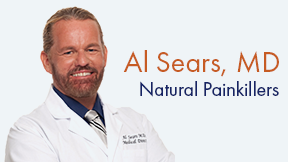 By Dr. Al Sears
By Dr. Al Sears Killing Jiminy: Stress, Fear, and Cortisol
Killing Jiminy: Stress, Fear, and Cortisol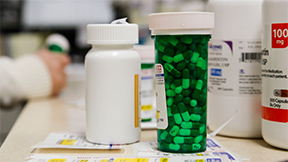 Why Your Pharmacist Can’t Tell You That a $20 Prescription Could Cost Only $8
Why Your Pharmacist Can’t Tell You That a $20 Prescription Could Cost Only $8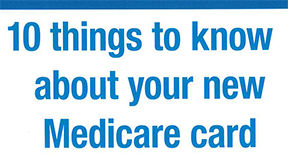 10 Things to Know About Your New Medicare Card
10 Things to Know About Your New Medicare Card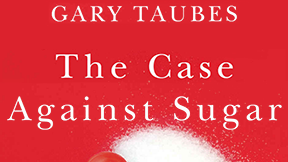 Gary Taubes ‘The Case Against Sugar’ Part 5
Gary Taubes ‘The Case Against Sugar’ Part 5 The following is a reprint of a letter of the Editor from Ron Iverson, President of the National Association of Medicare Supplement and Medicare Advantage Producers.
The following is a reprint of a letter of the Editor from Ron Iverson, President of the National Association of Medicare Supplement and Medicare Advantage Producers.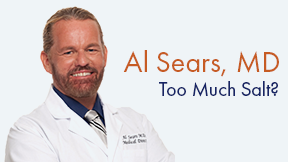 Note from Lance: This is a reprint of an article by Dr. Sears with my comments after.
Note from Lance: This is a reprint of an article by Dr. Sears with my comments after.